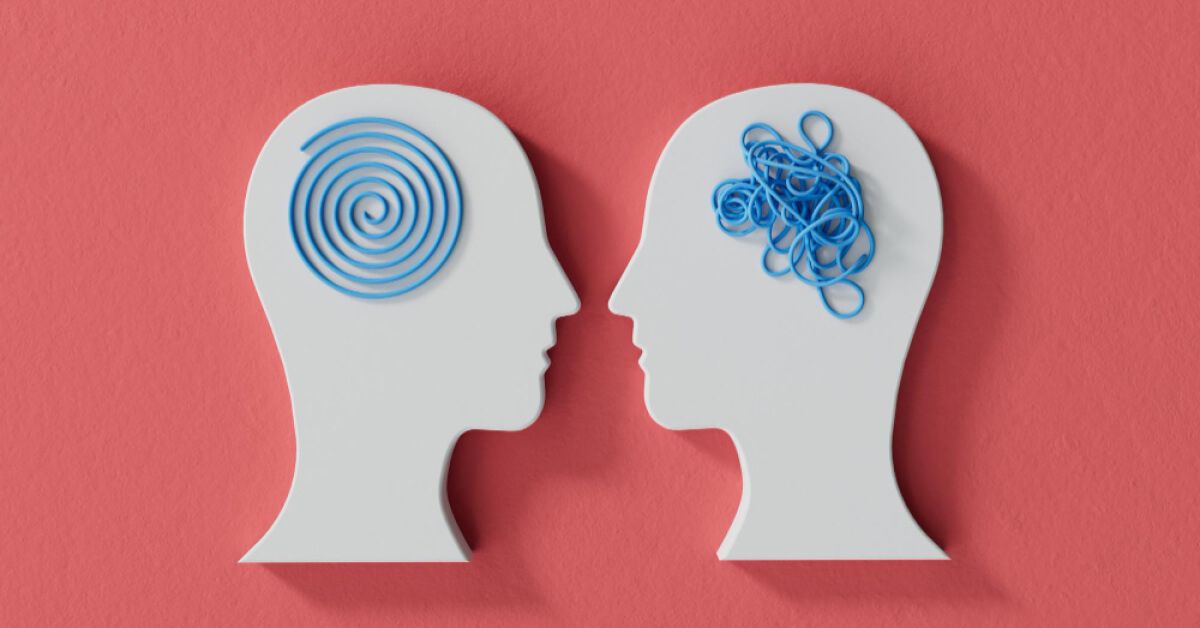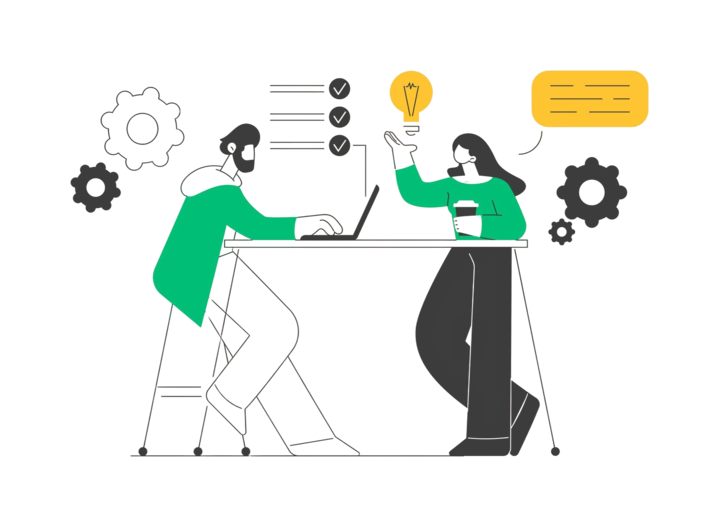Cultural competence in the workplace: Build inclusive teams in 2026

Think of a band where every instrument tries to outshine the others. The guitarist going rogue, the drummer speeding up, the singer refusing to follow the beat. The result? Chaos, not music. But when they listen, adjust, and find a shared rhythm, something magical happens and harmony is created.
Cultural competence works the same way. It’s not about making everyone play the same note, it’s about understanding the unique sound each person brings and learning how to blend those differences into something stronger.
In today’s interconnected world, that skill is the difference between constant noise and meaningful progress. And if harmony is the goal, mastering cultural competence is where the real symphony begins — let’s explore how to get there.
TL;DR
What is cultural competence in the workplace, really?
TL;DR
Cultural competence in the workplace means understanding, respecting, and valuing cultural differences while working together.
It helps leaders and teams navigate cultural diversity, break language barriers, and turn unique cultural backgrounds into strengths instead of obstacles.
Okay, now let’s drop the formal dictionary vibe. Cultural competence isn’t some boring HR jargon—it’s what keeps your Monday meeting from sounding like a bad game of broken telephone. Think of it as the secret sauce that turns cultural chaos into cultural magic. Ready? Let’s unpack it with a little flair.
Beyond simply acknowledging differences
Cultural competency isn’t about knowing every holiday on the global calendar or memorizing greetings in 20 languages. It’s about recognizing that people bring unique cultural backgrounds to work and that those differences affect communication, problem-solving, and collaboration. Ignoring this? That’s where misunderstandings and disengagement creep in.
The importance of respect over assumptions
Think about it: assuming everyone works, thinks, or communicates the same way is like expecting every coffee order to be a flat white. Cultural competence means leaders respect varying perspectives, work styles, and traditions, rather than pushing one-size-fits-all approaches that fail miserably.
Communication as a critical factor
Language barriers and cultural differences can make messages go hilariously wrong—or painfully misunderstood. Culturally competent teams learn to pause, ask, and clarify instead of pretending to “get it.” The result? Fewer awkward moments, more trust, and smoother collaboration across cultural diversity.
Now that we understand what cultural competence really means, let’s explore why it’s no longer optional in today’s workplaces.
Why is cultural competence a must-have skill in today’s global workforce?

Let’s be real—working today isn’t just about logging into Slack and smashing deadlines. It’s about teaming up with colleagues who may have grown up on totally different cultural backgrounds than yours. And when those worlds collide, magic can happen… but only if you know how to navigate it.
Here’s the thing: cultural competence isn’t just “nice to have.” It’s like Wi-Fi—essential. Without it, cross cultural communication gets messy, misunderstandings pop up, and you risk creating awkward silences in meetings that could’ve been avoided with a little cultural awareness. With it, people collaborate better, trust flows, and ideas hit harder.
Think of it this way—cultural humility is like learning that you don’t always have the answer. Instead of assuming your way is the only way, you respect and adapt. That’s how you bridge racial and ethnic disparities that quietly affect workplace dynamics, even when you don’t notice them.
At the end of the day, diverse teams aren’t just about checking boxes. They’re about mixing perspectives, solving problems in fresh ways, and building workplaces where everyone feels they belong. Cultural competence makes sure that diversity doesn’t just sit in the room—it actually speaks, collaborates, and thrives. And that’s where the real wins happen.
If cultural competence is this essential, how does it actually shape the way teams build trust and communicate?
How does cultural competence impact team communication and trust?
Let’s say you’re in a meeting where one teammate from Japan nods silently, another from Brazil passionately debates, and someone from Australia cracks a joke mid-discussion. Without cultural competence, you might misread the silence as disinterest, the debate as aggression, and the joke as unprofessional. See the chaos?
Now, imagine the same scenario with a culturally competent team. Suddenly, those nods are understood as agreement, the debates are seen as passion for ideas, and the humor becomes a way to build rapport. Everyone learns to communicate effectively because they understand that different cultures express themselves in, well, different ways.
This is where cultural competency training comes in. Think of it as diverse training that equips teams to decode these signals instead of misinterpreting them. It transforms a group of individuals from a diverse culture into one that actually trusts each other.
And here’s the fun part: when people feel understood, trust skyrockets. Teams share openly, resolve conflicts faster, and collaboration becomes less of a struggle and more of a flow. The cherry on top? Job satisfaction goes through the roof because employees know they don’t have to “translate” themselves constantly. That’s the power of cultural competence—it turns miscommunication into connection.
But what happens when this understanding is missing? The signs might be more common than you think.
What are the most common signs of poor cultural awareness at work?

TL;DR
A lack of cultural awareness shows up as misunderstandings, poor collaboration, and friction in a diverse culture.
Without addressing unconscious biases and cultural norms, teams miss out on becoming culturally competent and building meaningful inclusion initiatives.
So, how do you actually know if your team needs a cultural wake-up call? Spoiler alert: it’s not about wearing international food festival T-shirts once a year. Cultural awareness isn’t a checkbox but it’s the difference between a workplace where ideas bounce freely and one where people stay quiet because they feel misunderstood.
If you’re leading a team, it’s your job to notice the subtle red flags. And trust me, these signs are less about dramatic confrontations and more about the tiny awkward silences, the missed chances to collaborate, and the way people sometimes look like they’re solving a puzzle instead of listening to each other.
Frequent miscommunications across teams
When your team struggles to understand each other, it’s not always about accents or language. It can be about failing to grasp cultural norms that shape how people express themselves. Without cultural competency, simple comments can spiral into awkward misunderstandings that slow down productivity.
Resistance to diversity training
If employees roll their eyes or avoid workshops, it could signal deeper cultural biases. Diversity training isn’t just an HR trend, it’s an opportunity to uncover unconscious biases and grow as a team. Ignoring it means losing a chance to build trust and create stronger collaboration.
Struggles with inclusion initiatives
Inclusion initiatives often fail when teams don’t buy in. You’ll notice some people engaging while others treat it like background noise. A culturally competent workplace ensures inclusion isn’t performative—it’s woven into everyday interactions, not left to one-off events.
Overlooking professional fields beyond the workplace
Take medical education, for instance. Without cultural awareness, even healthcare teams miss crucial patient cues tied to cultural norms. The same logic applies in business—if your team doesn’t adapt, it risks overlooking valuable perspectives and future research insights.
Low trust and job satisfaction
When unconscious biases go unchecked, employees feel undervalued. Over time, trust erodes, collaboration suffers, and job satisfaction plummets. A truly diverse culture can only thrive when everyone feels respected, heard, and free to contribute their authentic selves.
Ignoring cultural competence is like ignoring a slow leak. It might not burst today, but it will eventually drain trust, morale, and innovation.
What are the risks of ignoring cultural competence at work?

TL;DR
Ignoring cultural competence leads to poor communication skills, fractured teamwork, and organizational setbacks.
Without cultural awareness, diverse teams lose trust, creativity drops, and workplaces miss the chance to adapt to different backgrounds effectively.
Here’s the thing: ignoring cultural competence is a bit like ignoring that blinking check-engine light. Sure, the car still runs… for now. But eventually, you’ll be stuck on the side of the road wondering why you didn’t deal with the problem earlier.
Workplaces are no different, when cultural competence is sidelined, cracks show up in ways you can’t afford to miss.
Breakdowns in communication and collaboration
Teams composed of individuals from diverse backgrounds require strong communication skills to succeed. Without cultural awareness, comments get misinterpreted, jokes fall flat, and feedback feels harsh instead of helpful. Over time, this weakens trust and slows down projects.
Negative impacts on mental health
Employees who feel misunderstood or excluded because of cultural insensitivity often struggle with stress, isolation, and anxiety. In the long run, these mental health challenges affect morale and lead to higher turnover rates. Ignoring cultural competence here isn’t just unkind—it’s costly.
Organizational blind spots
When leaders fail to create awareness, the organization misses valuable insights from diverse voices. Innovation stalls because only dominant perspectives shape decisions. Instead of thriving in a diverse environment, the company risks becoming rigid, outdated, and unable to adapt to change.
Lessons from health systems
Even outside corporate spaces, health systems show why culturally competent care matters. Patients from diverse health backgrounds often report poor patient perceptions when cultural sensitivity is lacking. The same applies to workplaces because without cultural competence, employees feel unheard and undervalued.
Erosion of trust and reputation
A lack of cultural competence can quickly spread beyond internal dynamics. If clients, customers, or patients perceive your team as dismissive of cultural differences, trust erodes. In today’s interconnected world, that loss of reputation can be devastating.
In short, ignoring cultural competence isn’t a harmless oversight. It’s an organizational risk that touches communication, mental health, innovation, and even public image. Better to act now than watch those risks pile up.
What are the biggest benefits of improving cultural competence in the workplace?
Imagine walking into a meeting where people from completely different ethnic differences, sexual orientation, and backgrounds actually feel like they belong. No awkward silences, no tiptoeing around topics—just open collaboration. That’s the magic of cultural competence, and trust me, it transforms the entire work environment.
Now let’s break down why improving cultural competence isn’t just a “nice-to-have” but a game-changer for every workplace.
Boosting self awareness for stronger collaboration
The first benefit starts with looking in the mirror, literally. When employees understand how their own cultural lens shapes the way they see others, it’s easier to respect and collaborate. It’s not about being perfect—it’s about realizing you don’t have all the answers and being open to learning.
Creating an inclusive workspace with a practical framework
Here’s where culture gets real. An inclusive workspace doesn’t happen by accident. With the right practical framework—whether through training, workshops, or even lessons from medical assistants who work with diverse patients daily—companies can foster genuine connections across ethnic differences and sexual orientation.
Driving team performance and employee retention
And finally, the payoff everyone loves—results. When cultural competence is prioritized, team performance skyrockets. Misunderstandings decrease, creativity flourishes, and ideas flow more freely. And let’s not forget employee retention—people want to stay in a work environment that values, supports, and empowers them to be their authentic selves.
But how does cultural competence differ from the broader DEI strategies many companies focus on?
How is cultural competence different from diversity, equity, and inclusion (DEI)?

You walk into a training session where everyone’s asked to roleplay as a medical receptionist handling patients from different cultural backgrounds. One person fumbles with communication styles, another forgets cultural sensitivity at work, and someone else shines by simply listening first. That’s the moment the difference clicks—DEI and cultural competence are not the same thing.
Here’s how it breaks down. Diversity, equity, and inclusion (DEI) is the broad framework—it’s about hiring diverse talent, ensuring fairness, and creating space where everyone feels they belong. Think of it as setting up the stage where every voice has a mic. Cultural competence, meanwhile, is the day-to-day skillset that keeps the show running. It’s adapting to different communication styles, showing empathy, and respecting cultural nuances so collaboration doesn’t fall apart.
Even team academies armed with team inclusivity best practices can stumble if cultural competence isn’t part of the equation. Why? Because a stage full of diverse people isn’t enough—without the ability to connect and work together, you get tension instead of teamwork.
At the end of the day, cultural competence is what breathes life into DEI efforts. It’s the missing piece that drives employee engagement and makes inclusion more than a policy—it makes it a lived experience.
Understanding that difference is key before you design any training program that actually works.
How to run cultural competence training that actually works?
Most cultural training sessions get a bad rep—they often feel like sitting through a lecture you didn’t sign up for. Slides roll by about cultural groups, everyone nods, and nothing really changes. But training that actually works? It’s engaging, practical, and gives people the tools to improve cultural competency in real time.
Now, let’s break down how to build cultural competence training that people don’t just attend—but actually remember and use.
Start with real-world stories
Forget the endless definitions. Instead, bring in case studies from healthcare research or organizational psychology. Show how cultural knowledge (or the lack of it) impacted real outcomes. Stories stick, lectures don’t.
Make it interactive and personal
Training should never be one-sided. Encourage employees to share experiences from their own cultural groups or diverse cultural backgrounds. This not only sparks discussion but helps colleagues connect with perspectives they’ve never considered.
(Source: Trinet)
Blend theory with practice
Hand people a practical toolkit they can use immediately. Roleplays, scenario-based exercises, and feedback loops are golden. They help employees improve cultural competency on the spot rather than waiting to apply it “someday.”
Keep it ongoing, not one-and-done
The biggest mistake? Treating training like a yearly chore. To truly improve cultural competency, build follow-ups, refreshers, and peer discussions into the culture. That’s how learning becomes a habit, not homework.
And once training is in place, how do you sustain growth beyond the classroom?
What are the most effective ways to boost cultural competence at work?
Cultural competence doesn’t grow by itself—it’s like a muscle. You can’t just read about it in a handbook and expect instant results. You’ve got to practice, stumble, learn, and grow. And the best part? Becoming culturally competent doesn’t just improve teamwork; it makes the workplace more human, inclusive, and fun.
TL;DR
Boosting cultural competence requires hands-on strategies like employee resource groups, cross cultural communication skills training, and developing cultural humility.
When teams actively learn about other cultures and embrace cultural differences, they become more culturally competent, inclusive, and collaborative.
Encourage employee resource groups
Employee resource groups (ERGs) are game-changers. They create safe spaces for people from different cultural backgrounds to share experiences, educate others about cultural diversity, and advocate for inclusivity. ERGs help colleagues learn from each other in ways no textbook ever could.
Invest in cross cultural communication skills
Great teams aren’t just diverse—they know how to talk to each other. Training employees in cross cultural communication skills builds confidence and reduces misunderstandings. Whether it’s learning about other cultures’ communication styles or adapting to new approaches, these skills make collaboration smoother.
Teach and practice cultural humility
Cultural humility is the secret sauce. Instead of pretending to know everything about other cultures, employees learn to listen first, ask questions, and adapt. This mindset creates trust and reduces the friction caused by assumptions.
Normalize learning from cultural differences
Workplaces that celebrate cultural differences grow stronger. Activities like “culture swap lunches” or spotlighting traditions during team meetings make learning fun and casual. It’s not about being perfect—it’s about showing respect for other cultures while building authentic connections.
Commit to continuous development
To truly develop cultural competence, organizations must treat it as ongoing, not one-off. Workshops, feedback loops, and everyday practices reinforce cultural humility and ensure teams become progressively more culturally competent, creating long-term inclusion instead of short-lived change.
And when those habits start shaping your hiring and onboarding, the results multiply.
Can cultural competence improve hiring and onboarding?

We’ve already explored how cultural competence in the workplace fuels stronger teamwork and smoother collaboration. But here’s the twist—it doesn’t just stop at day-to-day interactions. Cultural competency can completely reshape the way companies hire and onboard new talent.
Imagine starting a new job where cultural competence isn’t hidden in HR manuals but actively demonstrated in every step of the process. That’s when employees feel like they belong from day one.
Hiring with cultural competence in mind
Human resource departments that apply cultural competence during hiring gain access to a much wider pool of diverse cultural talent. Instead of simply looking for “fit,” they look for complementary skills and perspectives that enrich the team. When cultural competence important in interviews and assessments, candidates are evaluated fairly, without unconscious biases creeping in.
The result? Smarter hiring decisions and stronger, more balanced teams that can adapt to any challenge.
Onboarding with cultural competence training
For new hires, onboarding often feels like drinking from a firehose—policies, managing passwords, procedures, all at once. Layer on cultural differences, and it can feel overwhelming. That’s why integrating cultural competence training into onboarding is a game-changer.
New employees don’t just learn company systems; they learn how to navigate cross-cultural dynamics, embrace differences, and build respectful connections right away. This reduces misunderstandings, strengthens confidence, and encourages genuine inclusion from day one.
Building long-term impact
When cultural competence is prioritized in hiring and onboarding, employees feel valued and supported early in their journey. This not only boosts retention but also sets the stage for higher engagement and productivity.
Simply put, weaving cultural competency into these early stages creates a culture where inclusivity isn’t performative—it’s real, lived, and sustainable.
But hiring is only the beginning. Leadership has to model those values every day.
How can leaders demonstrate cultural competence in everyday actions?
If cultural competence shapes hiring and onboarding, then leaders are the ones who bring it to life every single day. Employees rarely flip through HR handbooks for inspiration—they watch how their managers behave. That means leaders set the tone for workplace cultural awareness, showing teams whether inclusion is real or just a poster on the wall.
Modeling cultural competency starts with ongoing commitment. Leaders who engage in diversity training regularly, stay curious about different cultures, and demonstrate openness to learning show that this isn’t a one-off checkbox—it’s a daily practice. Even small actions, like asking respectful questions or acknowledging cultural holidays, build trust and connection.
Another key piece is addressing cultural biases openly. Nobody is free from bias, but when leaders admit their blind spots and share what they’ve learned from cultural competency training, it creates space for employees from diverse backgrounds to feel safe doing the same. It turns mistakes into opportunities for growth.

Stronger cultures begin with cultural competence
Track it with CultureMonkey's People Science-backed engagement surveys
Book a demoLeaders apply cultural knowledge in real-time. Whether it’s adjusting communication in cross-cultural conversations or recognizing the contributions of employees from different cultures, these actions prove that diverse and cultural competence isn’t just theory—it’s lived out. And when leaders lead this way, the whole organization follows.
And the best way to know if it’s working? Ask the people experiencing it.
How does feedback and employee surveys help track cultural growth?

TL;DR
Employee surveys and feedback highlight cultural strengths and gaps, helping organizations measure progress in cultural competency.
Tracking cultural growth requires ongoing commitment, especially in workplaces with employees from different backgrounds and diverse backgrounds.
Think about it—if you’ve ever tried cooking without tasting the food, you know it’s a disaster waiting to happen. The same applies to cultural growth at work. You can run all the training in the world, but without employee feedback on workplace culture, you’re just guessing whether it’s working or not.
That’s where surveys and feedback become your taste test—they reveal what’s flavorful, what’s bland, and what desperately needs more spice.
Spotting cultural blind spots
Surveys help uncover where cultural competence important but currently lacking. Employees from different backgrounds often see issues leaders miss—whether it’s subtle biases, weak cross cultural communication, or gaps in inclusion. Listening to their voices ensures growth isn’t just assumed—it’s measured.
Turning feedback into action
Getting surveys is one thing, but acting on them is where the magic happens. Employee feedback on workplace culture should shape new initiatives, improve existing ones, and refine cultural competency training. Without this follow-through, surveys are just glorified suggestion boxes.
Learning from other industries
Even healthcare providers use surveys to understand health care disparities and improve culturally competent care. Research from national academies press shows feedback is critical in identifying systemic issues and improving outcomes. Workplaces can borrow the same logic to strengthen their own inclusivity.
Building an ongoing commitment
Tracking cultural growth isn’t a one-off activity. Continuous surveys and feedback loops reflect an ongoing commitment to cultural competency. Over time, these insights help organizations grow stronger, more adaptable, and more inclusive—proving that diverse backgrounds aren’t just present, they’re thriving.
“Cultural competence in the workplace is an overemphasized trend with limited real-world impact.”
Many leaders dismiss cultural competence as a “soft skill” that doesn’t influence bottom-line outcomes. However, evidence consistently shows the opposite. A culturally competent workplace strengthens trust, communication, and collaboration — all of which directly impact innovation, retention, and business growth.
According to SHRM’s Global Workplace Culture Report (Jan 2025), the global average for workplace culture effectiveness is just 56%. This means nearly half of organizations are failing to create environments where employees feel valued, respected, and engaged.
Prioritizing cultural competence is about unlocking the potential of diverse teams and driving sustainable organizational performance.
But data is only powerful when it drives change and CultureMonkey turns feedback into the fuel that powers inclusive transformation.
Why CultureMonkey is the perfect tool to measure cultural sentiment and drive inclusivity

When it comes to improving cultural competence in the workplace, many leaders struggle to see what employees are actually feeling. Without honest insights, even the best intentions fall flat. That’s where CultureMonkey becomes a game-changer—helping organizations measure, track, and act on cultural sentiment while supporting teams to develop cultural competence.
Meet employees where they are—with honesty
CultureMonkey’s surveys are crafted to dig deep into cultural competency, allowing honest, anonymous responses that uncover surprises—both good and “aha, we need to fix that.”
Turn data into real action
It’s one thing to collect feedback; it’s another to do something with it. CultureMonkey identifies patterns, spots gaps in inclusion, and helps you draft follow-up initiatives—like tailored cultural competency training or internal cross-cultural workshops.
Watch progress or miss the mark
With AI-powered dashboards and benchmarks, stakeholders can see how cultural sentiment evolves over time—so you're always level-set, not guessing.
CultureMonkey bridges the gap between “enthusiasm for inclusion” and “we’re actually living it.” It enables organizations to put cultural competence into practice—turning feedback into inclusivity that sticks.
Conclusion
If there’s one thing we’ve learned, it’s that cultural competence in the workplace isn’t a buzzword—it’s the glue that holds diverse teams together. From hiring and onboarding to daily leadership actions, every step counts.
With cultural competency training, employee resource groups, and feedback loops, organizations can move beyond “diversity on paper” to real inclusion. And hey, tools like CultureMonkey make it easier to measure cultural sentiment without guesswork.
At the end of the day, when employees from different cultures feel respected, understood, and free to contribute, magic happens—team performance soars, trust deepens, and employee retention strengthens. So why settle for surface-level inclusion when you can build a workplace where cultural diversity isn’t just seen and is celebrated?
FAQs
1. How do I know if my team lacks cultural competence in the workplace effectively today?
You’ll notice recurring miscommunications, awkward silences, or resistance when collaborating across different cultures and varied backgrounds in everyday workplace interactions. Employees might avoid sharing ideas, or inclusion initiatives may feel performative and unimpactful over time. These are strong signs that your workplace cultural awareness is lacking significantly. A culturally competent team communicates effectively and adapts seamlessly to diverse cultural perspectives daily.
2. Is cultural competence just another term for DEI in modern organizations today globally everywhere?
Not exactly. DEI focuses on building fairness, equal opportunity, and team inclusivity best practices consistently and strategically worldwide, while cultural competence is about daily skills—understanding communication styles, adapting to different cultures, and managing biases effectively everywhere. Together, they create stronger collaboration, higher employee engagement, and workplaces that go beyond policies. Both are essential but not interchangeable.
3. Can anonymous employee feedback help uncover cultural gaps in organizations for better improvements?
Yes, anonymous feedback is a powerful tool to uncover cultural gaps within organizations and teams effectively. Employees from diverse backgrounds often feel safer sharing honestly when their identity isn’t tied to responses. This helps organizations identify blind spots, improve inclusion initiatives, and measure growth in cultural competency over time. Feedback fuels meaningful action and accountability consistently everywhere.
4. What does a good cultural competence training include for employees in diverse cultural backgrounds today?
Effective cultural competence training blends cultural knowledge, interactive exercises, and scenario-based practice with practical examples for employees. It encourages cultural humility, develops cross-cultural communication skills, and helps employees understand cultural norms from different backgrounds and perspectives globally. Training should also include ongoing sessions, not one-offs, ensuring that diversity and cultural competence become part of daily workplace behavior everywhere consistently.
5. How often should companies assess cultural competence for growth, inclusivity, awareness, and organizational success today?
Companies should assess cultural competence at least annually, though quarterly check-ins provide richer insights for sustainable growth and inclusivity everywhere. Regular assessments show whether diversity training, inclusion initiatives, and employee engagement strategies are working effectively. Measuring frequently demonstrates ongoing commitment, helps adapt to changing team dynamics, and ensures employees from different cultures always feel valued, respected, and fully supported consistently.




